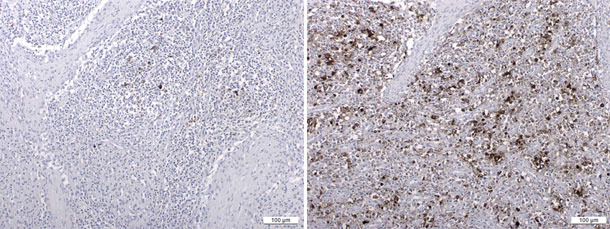Just until a couple of years ago, porcine circovirus type 2 (PCV2) vaccination was mainly applied in the context of the clinical expression of the infection. Therefore, major attention was paid on porcine circovirus diseases (PCVDs), and mainly on PCV2-systemic disease (PCV2-SD, formerly known as postweaning multisystemic wasting syndrome). Since the very beginning, vaccines against the virus indicated that they were excellent to control disease. Moreover, productive parameters such as mortality were also improved, sometimes to the level they had more than 20 years ago. Since the perception on PCV2 vaccines efficacy was that good, a number of veterinarians and farmers decided to apply such products not only on these clinically affected farms, but also in the rest of the company/owned herds. Results in these non-PCVD herds (presumably healthy farms) were also improved globally. Today, close to the end of 2013, we can confidently say that there is fairly extensive information about the effects of PCV2 vaccines in what we call subclinical scenarios.
 |
|
| PCV2 antigen detected by an immunohistochemistry technique. Such low amount of virus-infected cells can be found in lymph nodes of subclinically infected pigs. | PCV2 antigen detected by an immunohistochemistry technique. Such high amount of virus-infected cells is found in lymph nodes of PCV2-systemic diseased affected pigs |
How to define a PCV2-subclinical infection (PCV2-SI)? Based on PCV2 serological studies, it is assumed that PCV2 infection is ubiquitous all over the world, while prevalence of clinical disease is much lower. On the other hand, the first evidence of PCV2 infection was retrospectively found in Europe in 1962, while the first retrospectively established diagnosis of PCV2-SD was from middle 80s. Therefore, taking all existing data together, the most common form of PCV2 manifestation is the subclinical infection, now and in the past. At the very end, one should admit that even in severely PCV2-SD-affected farms, the highest percentage of pigs display a subclinical infection and not the disease. At this point, however, it would be worthy to define what a PCV2-SI is from a diagnostic point of view. In fact, a number of criteria have been proposed (see table 1). It is true that decrease of daily weight gain is a detrimental effect that is exerted by many diseases, and more than one may suggest that this is enough to consider it as a clinical and not a subclinical outcome. However, such sign is exclusively established if repeated weight measures are performed, so, the “clinical eye” is not sufficient to detect it.

Table 1. Clinical outcome and criteria proposed to establish a diagnosis of a PCV2-SI.
| Clinical outcome | Diagnostic criteria |
| Decreased average daily gain without any evident clinical sign |
Criteria 2 and 3 can potentially be substituted by PCV2 detection techniques such as standard PCR |
So far, in this so-called subclinical scenario, it has been demonstrated that PCV2 vaccination of piglets improves average daily weight gain (ADWG) and reduces mortality and percentage of runts, weight variation at slaughter and feed conversion rate. It is true, however, that most of these effects have not been evaluated at the same farm at the same time, but there is a bunch of experiences in which one or several of these effects have been recorded. In any case, the number of evidences relating PCV2 vaccines and clinical situations is much higher, so, the effect of PCV2 vaccines on subclinical infections should still deserve further studies. Noteworthy, the most important missing data is the one linked with economics, mainly return of investment (ROI) of vaccination. To date, there is not a comprehensive study showing if the obtained ROI of vaccination in subclinical scenarios is always sufficient, or it is just under certain circumstances. If this would be the case, do we know such circumstances? The answer is no. Moreover, this links also with PCV2 diagnostic issues. Do we know a certain threshold of PCV2 load that ensures an acceptable ROI of vaccination? The answer is, again, no. It is very likely that field veterinarians might not be worried by those questions, since the rates of vaccination are very high nowadays, with multiple countries reaching values of 90-100% of their pig population. Just becoming the devil’s advocate, the question would be if, by vaccinating almost if not all animals using the same general strategy for all farms, they are getting the best from the vaccine. Might be in the future we will talk about farm tailor-made PCV2 vaccination programs that take into account maximizing vaccine efficacy (best application timing, collective of application – sows, piglets or sows and piglets, etc.) together with ROI.
At the very end, from a scientific point of view, it would be great to know the mechanisms by which pigs develop clinical or subclinical infections. A number of publications have dealt with this important issue, but a complete answer is still lacking. Moreover, we know some of the subclinical effects of PCV2 infection, but these are not as well-known as the ones related with PCV2-SD. It has been published that the subclinical PCV2 infection may be associated with decreased vaccine efficacy in general (referring to other vaccines applied at the time of PCV2 infection). In contrast, another experimental PCV2 subclinical infection was not able to establish detrimental effects upon pseudorabies vaccine immunological responses. Although a number of variable results have been generated all over the years, the general conclusion is that PCV2 has the ability to modulate the immune response, not only during the obvious overt disease but also in a subclinical scenario.
Might be there is a little doubt nowadays on the beneficial clinical and economic effects of PCV2 vaccination in subclinical infections in piglets, but… which is the role that sows play in the whole picture? Is it possible that vaccination can have positive effects in subclinical infections of sows? Well, we should move from perceptions to sound data!






